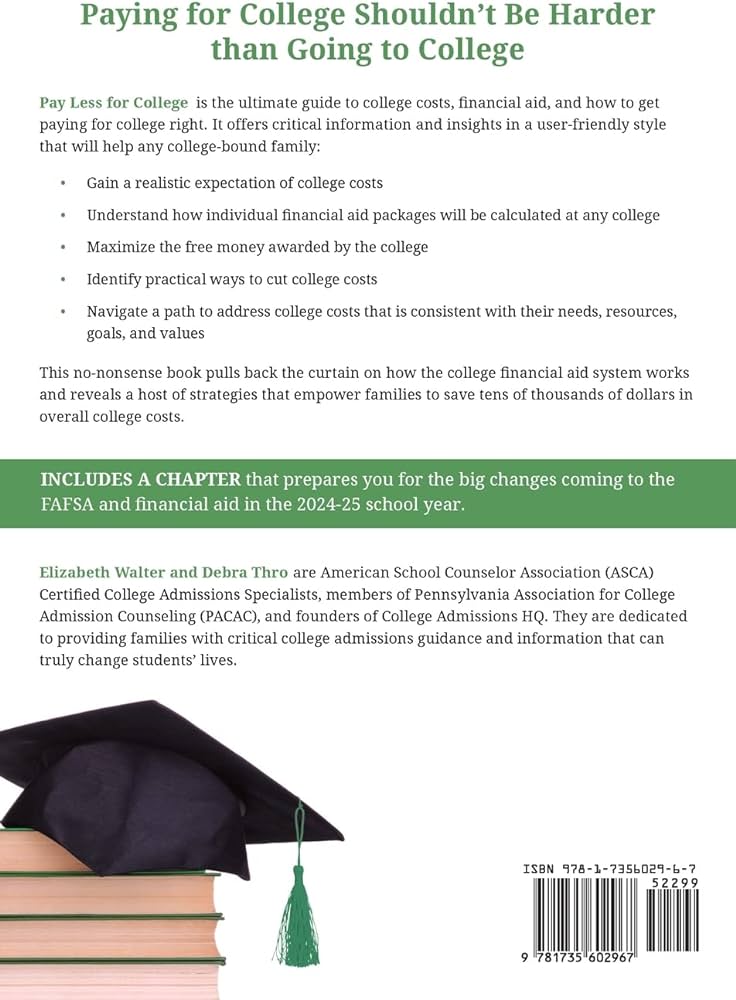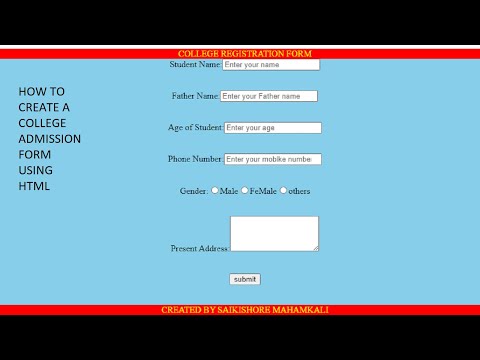Crafting an Effective College Admission Form Using HTML: A Step-by-Step Guide. Crafting an effective college admission form using HTML is made easy with this step-by-step guide! Learn how To create user-friendly forms without any technical jargon or complex terms. Follow this conversational & natural approach To enhance your college admission process.
Crafting an Effective College Admission Form Using HTML
Applying To college can be an overwhelming process, but having a well-designed admission form can make things much easier for both applicants & admissions teamsCrafting an Effective College Admission Form Using HTML. In this step-by-step guide, we will walk you through The process of crafting an effective college admission form using HTML. By following these guidelines, you can create a user-friendly form that gathers all The necessary information while providing a seamless experience for applicants.
Why Use HTML for College Admission Forms?
HTML, which stands for HyperText Markup Language, is The standard markup language for creating web pages. It provides structure & formatting To content, making it ideal for designing online forms. By using HTML, you have full control over The layout, styling, & functionality of your admission form.Crafting an Effective College Admission Form Using HTML
Crafting an Effective College Admission Form Using HTML, HTML forms allow for easy validation & data collection. You can incorporate various input types, such as text fields, checkboxes, drop-down menus, & radio buttons, To collect The desired information from applicants. With HTML, you can also ensure that The form is accessible across different devices & platforms, providing a seamless experience for all usersCrafting an Effective College Admission Form Using HTML.
Step 1: Plan Your Form Structure
Before diving into The coding processCrafting an Effective College Admission Form Using HTML, it’s crucial To plan your form structureCrafting an Effective College Admission Form Using HTML. Consider The information you need from applicants & organize it into logical sections. Common sections in a college admission form include personal information, educational background, extracurricular activitiesCrafting an Effective College Admission Form Using HTML, & essay submissions. Breaking down The form into sections will make it easier To design & navigate.
Step 2: Write The HTML Code
Once you have a clear structure in mind, you can begin writing The HTML code for your admission form. Start by creating a “ element & specifying The desired attributes,Crafting an Effective College Admission Form Using HTML such as The action (where The form data will be sent) & The method (how The data will be sent). Use appropriate semantic tags, such as `
In each section of your form, consider The best input types To use for The collected information. For example, you can use “ for names & addresses, “ for birthdate, & “ for dropdown menus. Use proper validation attributes, such as `required` & `pattern`, To ensure accurate data submission.

Step 3: Add Styling & Layout
While The focus of this guide is on crafting The HTML structure of your admission form, it’s essential To consider its visual appeal. Use CSS, The language for styling web pages, To add colors, fonts, & layout To your form. You can either write your CSS within The HTML file using The “ tag or link an external CSS fileCrafting an Effective College Admission Form Using HTML.
Ensure that The design is user-friendly & intuitive. Use appropriate spacing, headings, & labels To guide applicants through The form. Consider using a responsive design that adapts To different screen sizes To accommodate mobile usersCrafting an Effective College Admission Form Using HTML.
Step 4: Test & Validate
Before launching your admission form, it’s crucial To thoroughly test & validate its functionality. Make sure all form inputs are working correctly & that The form is submitting data as expected. Test for responsiveness across different devices & browsers To ensure a consistent experience for all users.
Add server-side form validation To double-check The submitted data & provide helpful error messages if anything is missing or incorrectly filled. This step is vital for maintaining The integrity of The admission process & ensuring accurate data collection.
Step 5: Integrate with Your Website
Once you are satisfied with your admission form, it’s time To integrate it into your college’s website. Determine where The form fits best within your existing website structure. Create a dedicated landing page or embed The form directly into an existing page using HTML code.
Ensure that The form is easily accessible To potential applicants. Add clear instructions & informative content To help users navigate The form effortlessly. Consider optimizing The form for search engines by incorporating relevant keywords & meta tags.
Step 6: Continuous Improvement & User Feedback
Creating an effective college admission form is an ongoing process. Collect feedback from applicants & admissions staff To identify areas of improvement. Use analytics tools To track form completion rates, identify drop-off points, & optimize The user experience.
Regularly review your form & make necessary updates based on user feedback & changing admission requirements. By continuously improving your form, you can enhance The application experience for prospective students & streamline The admissions process at your college.

My Experience:
Throughout my academic career, I have had The opportunity To work with different admission forms as both an applicant & part of The admissions team. Crafting an effective college admission form using HTML has significantly streamlined The application process & improved The overall user experience. By leveraging HTML’s flexibility & customization options, colleges can create user-friendly forms that capture all The necessary information while providing an intuitive interface for applicants.
Key Aspects of Crafting an Effective College Admission Form Using HTML:
- Easy form structure planning
- HTML code organization
- Appropriate input types & validation
- Styling & layout considerations
- Thorough testing & validation
- Integration with college website
- Continuous improvement & user feedback
These key aspects are essential for creating a seamless & user-friendly college admission form using HTML. 📝
Simplifying The Admission Process with HTML Forms
Crafting an effective college admission form using HTML offers numerous benefits To both applicants & admissions teams. It provides a structured & user-friendly experience, allowing for accurate data collection & streamlined processing. By following this step-by-step guide, you can create a customized form that meets The unique requirements of your college while providing a seamless experience for applicants.
Start simplifying The admission process today by leveraging The power of HTML forms. For more information & examples, visit The University of California admission page.
Remember, creating an effective admission form is an ongoing process, so don’t be afraid To iterate & improve based on user feedback. Happy form crafting!
For applying To Mission College in Santa Clara, California, visit their admissions page.
Crafting an effective college admission form using HTML is a crucial step in streamlining The admission process for educational institutions. In today’s digital age, having an online form that collects necessary information from prospective students is not only convenient but also efficient. By utilizing HTML, you can create a dynamic & user-friendly form that ensures a seamless experience for both applicants & admissions teams. In this step-by-step guide, we will explore The essential components & best practices for designing a college admission form using HTML.
Why Use HTML for College Admission Forms?
HTML, or Hypertext Markup Language, is The foundation of web development. It provides The structure & formatting for web pages, making it an ideal choice for creating online forms. When it comes To college admission forms, HTML offers several advantages:
User-Friendly Interface:
HTML enables The creation of intuitive & user-friendly interfaces that guide applicants through The form-filling process. With clear labels, input fields, & validation options, HTML forms make it easy for individuals To provide their information accurately.
Customizability:
HTML allows developers To customize every aspect of a college admission form, from The layout & design To The functionality. This level of customization ensures that The form aligns with The branding & requirements of The educational institution.
Data Collection:
HTML forms provide a convenient way To collect essential data from applicants. With various input types such as text fields, checkboxes, & dropdown menus, you can gather specific information required for The admission process, such as personal details, academic achievements, & extracurricular activities.
Step 1: Planning The Form
Before delving into The HTML coding process, it is crucial To plan The structure & content of your college admission form. Consider The following aspects:
Identify Required Fields:
Determine The information that is essential for The admission process. This typically includes personal details, academic recordsCrafting an Effective College Admission Form Using HTML, standardized test scores, & essays. Mark these fields as required To ensure that applicants do not overlook themCrafting an Effective College Admission Form Using HTML.
Consider Optional Fields:
While required fields are necessaryCrafting an Effective College Admission Form Using HTML, it is also beneficial To include optional fields that allow applicants To provide additional information. This could include extracurricular activities, leadership roles, community service, & more.
Create an Intuitive Layout:
Design your form with a logical flow, ensuring that related fields are grouped together. Consider The visual hierarchy of your form & use appropriate formatting To guide applicants through each section.
Validation & Error Handling:
Implement validation rules To ensure that applicants provide accurate & valid information. Display clear error messages when required fields are left blank or if there are formatting errors. This helps reduce errors & ensures The integrity of The data collected.
Step 2: HTML Structure
Now that you have a clear plan for your college admission form, it’s time To start coding The HTML structure. Begin with The basic HTML structure, including The doctype declaration, opening & closing , , & tags.
Doctype Declaration:
Add The doctype declaration at The beginning of your HTML document To specify The version of HTML you are using. For exampleCrafting an Effective College Admission Form Using HTML, indicates that you are using The latest HTML version.
Head Section:
Inside The section, include The

